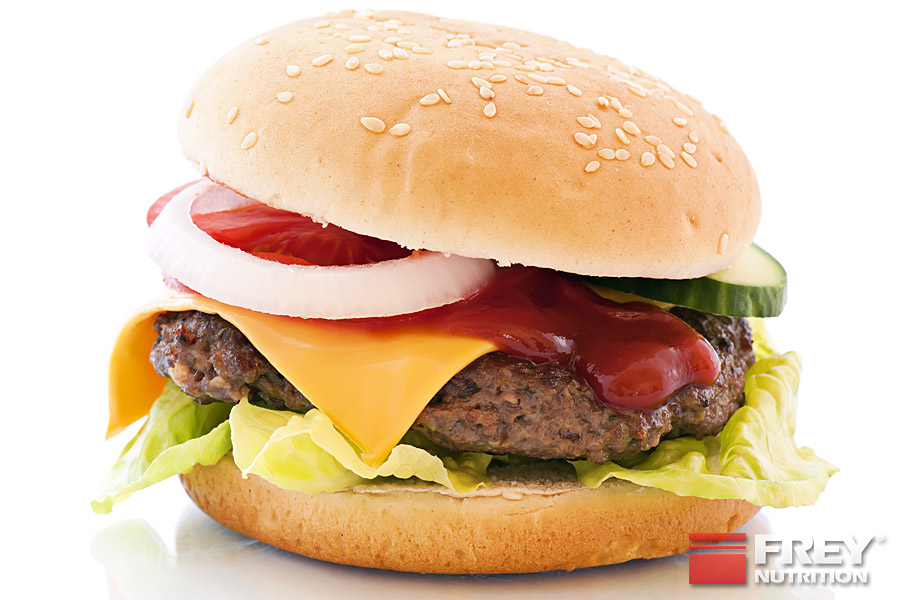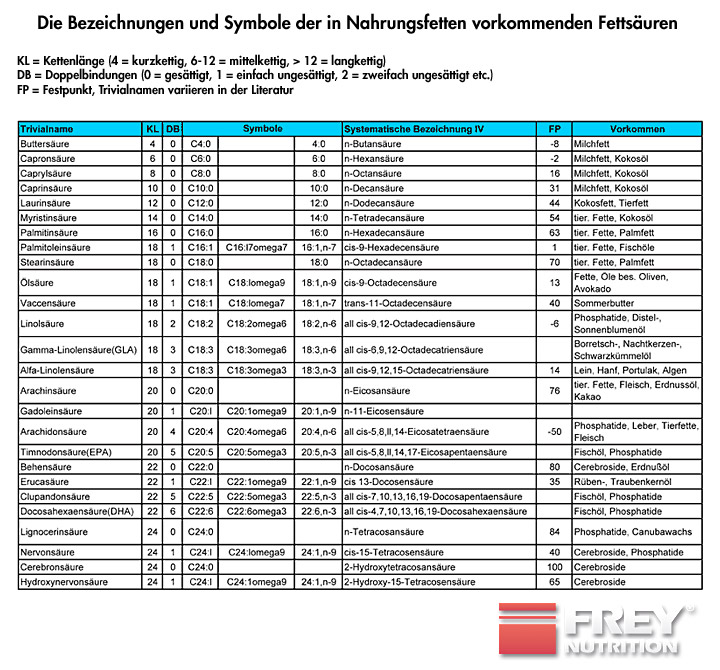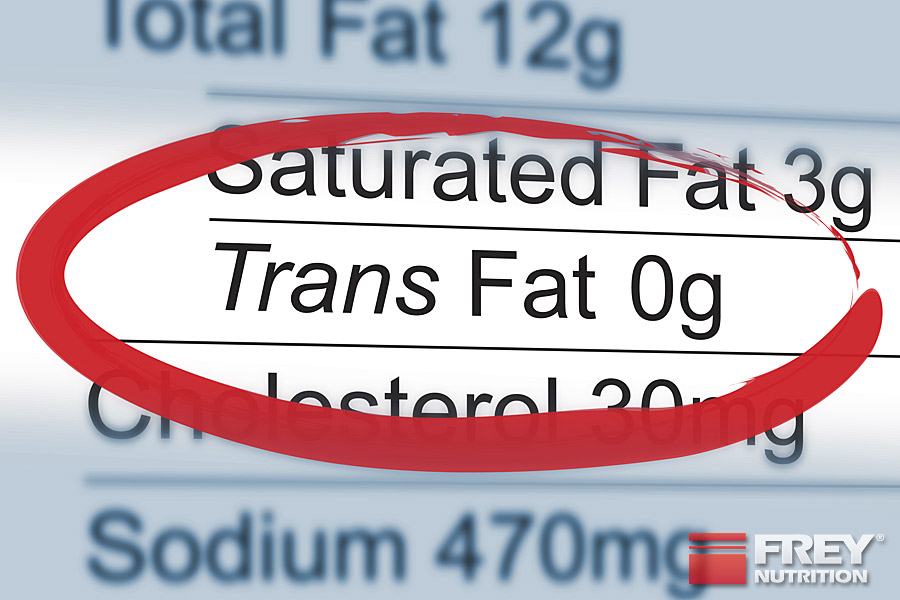FAT IS NOT THE SAME
43.8% of the population of industrialized nations dies from cardiovascular diseases, cancer (22.4%) and diabetes (1.8%).
About 50% of the population is overweight and fat is involved in all of these diseases. In recent years, however, thanks to the Nurses Health Study, it has been discovered that not only fat but also carbohydrates are involved in the above-mentioned disease-obesity problem. Basically, with fat, as with carbohydrates, the amount and type of these nutrients determines whether we become healthy, vital, strong and slim or whether the opposite occurs.
WHAT IS IMPORTANT IS THE RIGHT FATS, IN THE RIGHT AMOUNT AND AT THE RIGHT TIME.
IT DOESN’T WORK WITHOUT FAT!
Fat is primarily a source of energy. But since we hardly use energy in our current way of life and work, we store it as fat deposits on our bodies. Nevertheless, we cannot do without fat, because it is (just like proteins) a component of the cell membranes of almost all body cells and is the main component in nerve and brain cells in particular. Fat is also needed for the production of hormones, the flow of blood, to protect internal organs, for the sexual organs and for a myriad of important body functions. All in all, fat is indispensable for health, growth and performance - However, the right fats in the right amounts are crucial (too little is just as harmful as too much). The information contained in this article is intended to contribute to a conscious and sensible approach to fats.
THE DIFFERENT FATTY ACIDS AND THEIR EFFECTS
Not all fats are the same. In fact, almost all fats have different compositions, i.e. they consist of different fatty acids. The fatty acids of a fat determine whether it is healthy, serves as an energy supplier, is stored as body fat, whether it is used for the production of hormones, whether it contributes to the healthy development of the brain or whether it can be used for the growth of the body. Basically, only alpha-linolenic acid ( OMEGA-3 FATTY ACID ) and linoleic acid (Omega-6 fatty acid) are essential, i.e. they must be supplied through food. The human organism can produce or synthesize all other fatty acids necessary for health (endogenously) from these two fatty acids.
The synthesis of the various fatty acids required by the body takes place using the enzymes delta(9), delta(6), delta(5) and delta(4) desaturase. However, the body's limited enzyme activity often creates a bottleneck, so that the synthesis of alpha-linolenic acid and linoleic acid is only possible for the amount of fatty acids that are necessary to maintain health, but not for optimal performance.
There is hardly any food that contains only the two essential fatty acids mentioned above, so that all unsaturated fatty acids found in the organism are mainly endogenously synthesized from the (non-essential) monounsaturated oleic acid (Omega-9), the diunsaturated (essential) linoleic acid (Omega-6) and the triunsaturated (essential) alpha-linolenic acid (Omega-3).
DAILY FAT INTAKE SHOULD CONSIST OF 70% UNSATURATED AND 30% SATURATED FATS.
Even the often discredited "saturated" non-essential fatty acids that we consume with food partially optimize metabolism. The fact that optimal growth occurs with the intake of 30% saturated and 70% unsaturated fatty acids suggests that the organism has a certain need for non-essential saturated fats in addition to the essential unsaturated fatty acids mentioned above. It is now clear that the organism needs both saturated and mono- and polyunsaturated fatty acids in order to develop optimally. Our organism solves the problem of the limited capacity of the desaturase enzymes to synthesize the amount of fatty acids required for optimal development from linoleic and linolenic acid by supplying saturated and monounsaturated fatty acids.
However, this solution leads us to a new problem: the fatty acids that we consume with food compete for the desaturase enzymes. The delta(6)-desaturase enzyme in particular has a higher affinity for linolenic acid than for linoleic acid, and the affinity for linoleic acid is in turn higher than that for oleic acid. In other words, if we consume too much of a certain fatty acid, the other fatty acids that the organism needs for optimal function are neglected because the desaturase enzymes are occupied by the excess fatty acid.
Ultimately, it is about finding a fatty acid ratio that ensures that, given the genetically predetermined desaturase enzyme capacity, all fatty acids that the human organism needs for optimal development are present in sufficient quantities or are synthesized endogenously.
THE OPTIMAL FATTY ACID BALANCE
Optimal growth, good health and high performance are achieved when the fatty acid intake consists of 30% saturated fatty acids (animal fats), about 35% monounsaturated fatty acids (mainly omega-9 oleic acid), about 23% polyunsaturated fatty acids (omega-6 linoleic acid) and 12% polyunsaturated fatty acids (the omega-3 fatty acids alpha-linolenic acid but also the fish fats DHA and EPA).
Now we know the optimal fatty acid balance, i.e. we know what our daily fat intake should consist of. This leaves only two questions that need to be answered:
1. How much, i.e. what total amount of fat should we consume per day?
2. How much of which foods provide the necessary amount of fat?
Both questions would be relatively easy to answer (see tables above) if it were only about the daily fat intake, without simultaneously considering carbohydrate intake, which can have a negative impact on fat intake.
THE DANGEROUS FAT-CARBONATE CONNECTION
Carbohydrates, especially refined ones, i.e. sugars and syrups, but also refined starch such as white rice, white flour products, rice cakes, fruit juices, etc. - i.e. all short-chain carbohydrate products with a high glycemic index (GI) can easily be converted into body fat by the body. Fats consumed at the same time increase the risk of fat storage many times over, which is why the combination of carbohydrates with fats is a bad idea in most cases.
If you also consume too many low-glycemic carbohydrates, you will disrupt your fatty acid balance by increasing the amount of fat in your body far beyond the amount of pure fatty acids consumed. To ensure that only the fat consumed and not the fat endogenously synthesized from carbohydrates plays a role in the overall metabolism, not only the fatty acid intake but also the carbohydrate balance should be observed and optimized. (see: NUTRIENT: CARBOHYDRATES )
HOW MUCH FAT IS NEEDED PER DAY?
Healthy normal metabolizers with an average body weight who are neither too fat nor too thin should cover their daily calorie intake (approx. 2500 kcal per day for men - approx. 2000 kcal for women)* with 30% fat, 30% protein and 40% carbohydrates. This corresponds to a daily fat consumption of around 80 g for men and 65 g for women. Of course, this amount of fat should correspond to the fatty acid balance mentioned above and not be increased by additional fat that is formed endogenously from carbohydrates.
(* For an accurate calculation of the daily calorie requirement, THE ENERGY BALANCE very helpful.)
If you are too thin, it is best to increase the calorie amounts and nutrient composition, and thus the amount of fat consumed daily, by 20%, but maintain the fatty acid balance as stated above. In some cases, it is even sensible for very thin people to change the nutrient composition from 30% fat / 30% protein / 40% carbohydrates to 30% fat / 20% protein / 50% carbohydrates, whereby around 3000 kcal per day or around 500 kcal in addition to the daily required energy balance should be consumed.
If you are too fat, you have to make sure that your body uses the stored body fat. This is done by special diets such as the ketogenic diet/anabolic diet (see: WHICH DIET IS THE BEST? ) - by the following measures:
REDUCTION OF DAILY CALORIES REQUIREMENT BY 500 KCAL. INCREASE DAILY CALORIE CONSUMPTION THROUGH SPORT. CHANGE IN THE NUTRIENT RATIO TO 40 TO 50% PROTEIN / 30% FAT / 20 TO 30% CARBOHYDRATES (AN AVERAGE OF APPROX. 2000 KCAL FOR MEN AND 1600 KCAL FOR WOMEN PER DAY). CONTRARY TO OUTDATED RECOMMENDATIONS, IT IS THE CARBOHYDRATES AND NOT THE FATS THAT ARE REDUCED. INCREASE IN ESSENTIAL POLYUNSATURATED FATTY ACIDS, WHICH ARE IMPORTANT FOR THE FORMATION OF HORMONES AND FOR THE RATE OF METABOLISM AND LESS AS ENERGY SOURCES.
Obese people should cover 15% of their daily calorie intake with the polyunsaturated omega-3 fatty acid family. The remaining 15% should come in roughly equal parts from doubly saturated omega-6 linoleic acid, monounsaturated fatty acids such as omega-9 oleic acid and saturated fatty acids (from meat, milk, for example). Hemp and linseed oil, fish fats and sometimes rapeseed oil are particularly suitable for this "dietary" fatty acid balance. This relatively high intake of omega-3 fatty acids ensures the endogenous synthesis of prostaglandins, which help the kidneys to excrete excess tissue water. With an omega-3 fatty acid intake of 25 to 35 g per day (which corresponds roughly to the above-mentioned 15%), the resting metabolic rate and energy production (thermogenesis) and thus the burning of calories in the form of fats and carbohydrates can be increased to such an extent that more calories are consumed than are supplied by the fatty acids. (see study: FISH OILS ACCELERATE FAT BREAKDOWN )
"THE MISCONCEPTION THAT A LOW-FAT DIET WILL BUILD MORE MUSCLE AND LESS FAT OFTEN PREVENTS A SENSIBLE FAT INTAKE." (QUOTE: A. FREY)
There is now increasing evidence that obesity is only 10% a problem of genuine "overeating" and 90% is due to deficiencies in certain nutrients (especially omega-3 fatty acids, chromium, iodine, carnitine, potassium, magnesium, calcium and fiber). Such deficiencies lead on the one hand to hunger or even cravings, which can then indirectly lead to overeating, and on the other hand to a slowing down of the metabolism, which means that fewer calories are burned. A long-term deficiency in the above-mentioned nutrients can ultimately lead to obesity.
With a few sport-specific exceptions and special diets, competitive athletes generally have the same percentage requirement for proteins, fats and carbohydrates as the groups of people described above.
However, due to the higher percentage of muscle mass and the regular training sessions, their calorie requirements are higher and should also be adapted to the underlying intensity.
One problem with incorrect nutrition is that athletes often mistakenly eat a low-fat diet because they believe this will build more muscle and less body fat. The above explanations about fatty acids, hormones, cell membranes and metabolic activities should change this misconception. Fats can also regulate metabolism, have a positive effect on oxidation processes in the organism and energy production in all body cells, which is of utmost importance not only for performance, but also for building muscle, breaking down fat and regenerating after a training workout.
INDUSTRIAL OIL PRODUCTION AND ITS DISADVANTAGES
Oils are extracted from oilseeds by extraction and/or mechanical pressing. CO2 extraction is the most expensive, followed by mechanical pressing, with both methods producing a relatively high-quality oil. The third method is extraction with solvents (usually hexane or petrol), which is a "cheap" method of production and is significantly lower in quality than the first-mentioned methods.
"HIGH-QUALITY OILS ARE RARELY AVAILABLE IN THE COMMERCIAL INDUSTRY." (QUOTE: A. FREY)
Although high-quality oils can be produced using the first two methods, quality deductions must be made due to the low oil yield of industrially produced oils. These are by no means the same as "real" cold-pressed oils from organic sources.
To ensure that industrially produced oils do not spoil too quickly, they must be refined (degummed, deacidified, deodorized). The so-called deodorization ensures that the pesticides on the seeds and residues of the extraction solvents are removed from the oil. Refining is also necessary to increase the shelf life of the oils sold in stores. In the process, many of the nutritionally valuable fat components (such as lecithin, choline, enzymes, phytosterols and secondary plant substances) are lost. Even the best and most expensive oil on the market cannot be compared to a freshly pressed oil from organically grown seeds.
High-quality oils from purely organic production are often does not last longer than 3 to 4 months , whereas refined oils sold in stores can last up to one year.
Unrefined oils containing omega-3 fatty acids are particularly critical, as omega-3 fatty acids are particularly active and therefore spoil quickly. While unrefined olive or rapeseed oil with its omega-9 fatty acids can remain stable for months, linseed or hemp oil often spoils after just 3 to 5 months. This is particularly noticeable in the bitter and rancid smell/taste. To obtain high-quality and freshly pressed oil, such as walnut or linseed oil, you need to go to a nearby mill or, if you don't have one, go online. Freshly pressed linseed oils are odorless and taste slightly nutty. To ensure the longest possible shelf life, linseed oil should always be stored in the refrigerator and consumed within 3 to 4 months.
THE DANGEROUS TRANS FATTY ACIDS
Trans fatty acids are almost non-existent in nature, but are created by heating unsaturated fatty acids and are contained in so-called "hydrogenated" fats, among other things. The consumption of trans fatty acids increase the level of "bad" LDL cholesterol in the blood and are a contributing factor to coronary heart disease (arteriosclerosis, heart attack) (see: NUTRIENT: FATS ).
According to scientific studies, foods with higher levels of trans fatty acid esters pose an increased health risk.
Fast food, ready meals, various baked goods and low-quality margarines sometimes contain considerable amounts of trans fats and should therefore be avoided or consumed in moderation. If the ingredients list of a ready meal contains "hydrogenated fat" or "hydrogenated fat" - Hands off !
It is also important not to heat vegetable oils with a high proportion of polyunsaturated fatty acids, especially linseed or walnut oil, but to only use oils suitable for frying. The latter include olive, sunflower or rapeseed oils, for example.
FINALLY...
With the information in this article, nothing should stand in the way of sensible handling and use of fats. We wish you every success in implementing this!

















